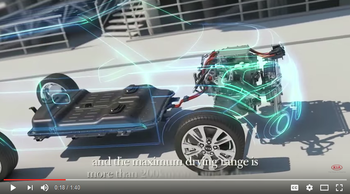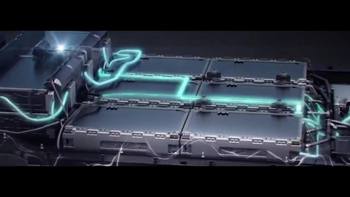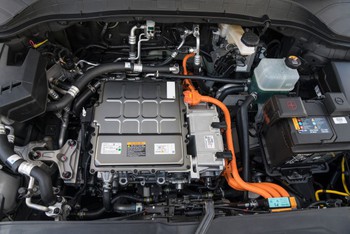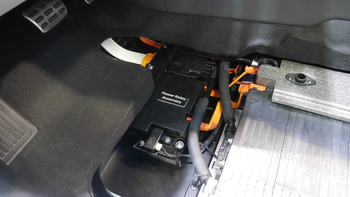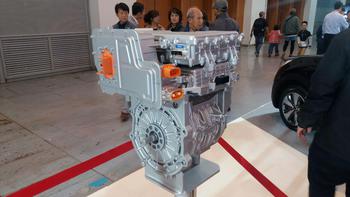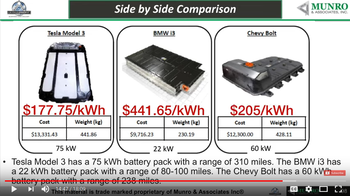-
First: Here's some images and data of the Soul EV battery.
Click an image to see the bigger version.






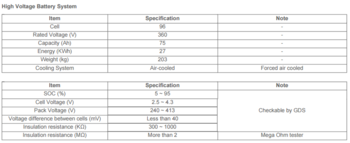
There are details about the chemistry here - Comparing Battery Chemistries
The Soul EV has a battery by SK Innovation.
It has 192 polymer pouch type cells, lithium nickel manganese cobalt oxide (NMC) cathode, .... Each 40Ah battery cell has energy density of 200 Wh/kg
They are laid out in a series string of 96 sets of 2 parallel cells.
The rated capacity of the pack is 75Ah, whereas the measured total capacity is about 85Ah. Hence the rated capacity of each cell is 37.5Ah whereas actual is about 42Ah
The 2015 Soul EV battery pack is 30.5 kWh and weighs 202.8kg -> Gravimetric Energy Density = 150.4 Wh/kg
The battery cell chemistry in the Kia Soul EV is probably NCM 622. It has never been confirmed but the energy density matches what we now know is the energy density of an NMC 622 cell in the B olt EV, and this article SK Innovation rolls out advanced batteries states :

-
Here's a video in Korean with a lot of detail about the structural integrity of the battery pack.
https://www.youtube.com/watch?v=y9H4JjpPFjc
-
First: Here's some images and data of the Soul EV battery.
Click an image to see the bigger version.







There are details about the chemistry here - Comparing Battery Chemistries
The Soul EV has a battery by SK Innovation.
It has 192 polymer pouch type cells, lithium nickel manganese cobalt oxide (NMC) cathode, .... Each 40Ah battery cell has energy density of 200 Wh/kg
They are laid out in a series string of 96 sets of 2 parallel cells.
The rated capacity of the pack is 75Ah, whereas the measured total capacity is about 85Ah. Hence the rated capacity of each cell is 37.5Ah whereas actual is about 42Ah
The 2015 Soul EV battery pack is 30.5 kWh and weighs 202.8kg -> Gravimetric Energy Density = 150.4 Wh/kg
The battery cell chemistry in the Kia Soul EV is probably NCM 622. It has never been confirmed but the energy density matches what we now know is the energy density of an NMC 622 cell in the B olt EV, and this article SK Innovation rolls out advanced batteries states :

SK Innovation was the first in the world to succeed in the commercial production of advanced NCM 622 batteries.
-
Here's a video in Korean with a lot of detail about the structural integrity of the battery pack.
https://www.youtube.com/watch?v=y9H4JjpPFjc
-





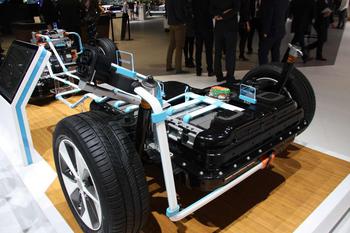








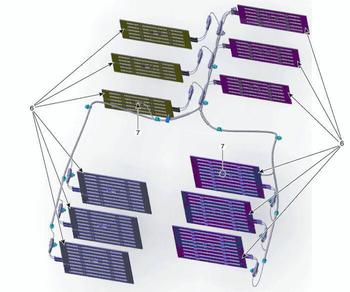











![300W Car Power Inverter 12V to 110V,PiSFAU DC to AC Car Plug Adapter Outlet with Multi USB[24W USB-C] /USB-Fast Charger(24W) Car Inverter,Car Charger for Laptop Vehicles Road Trip Essentials](https://m.media-amazon.com/images/I/41-KedJShYL._SL500_.jpg)





























